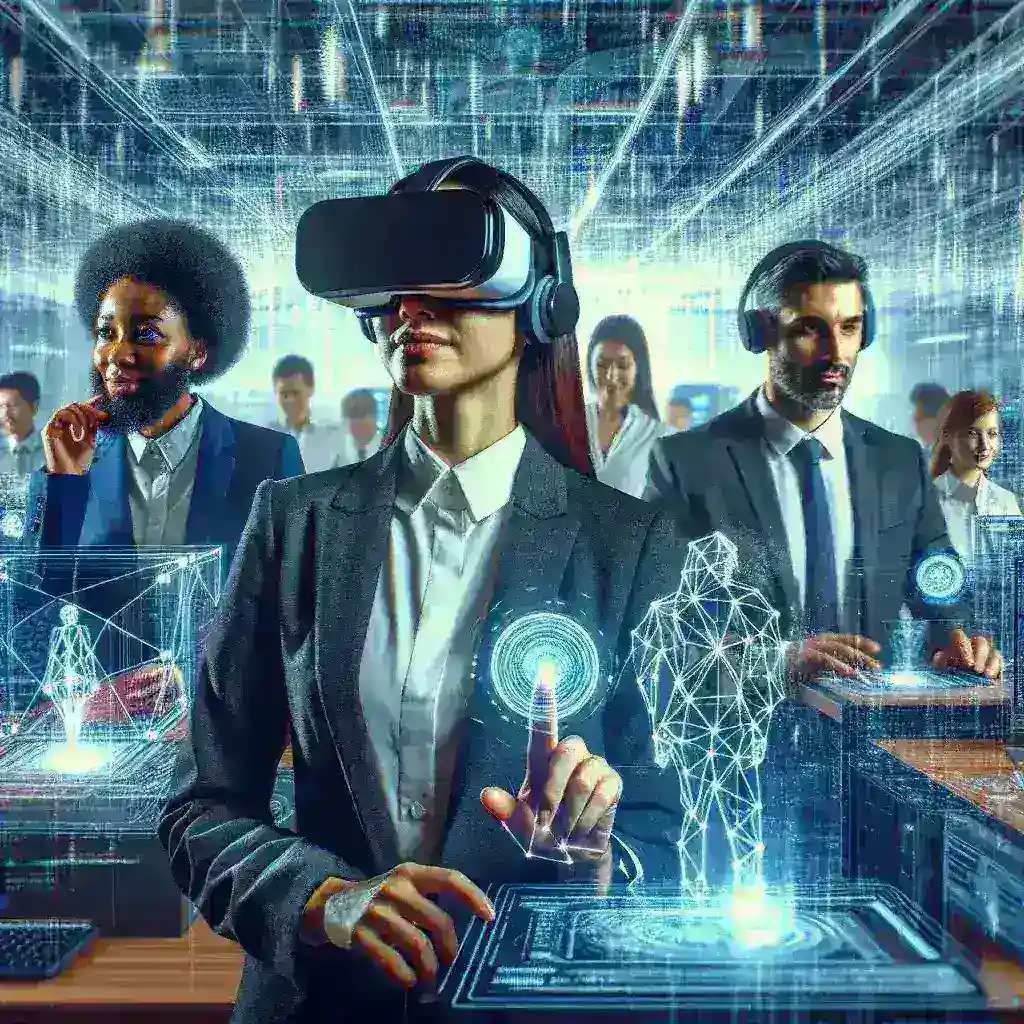Introduction to Extended Reality in Enterprise Training
In recent years, the landscape of corporate training has undergone a significant transformation, primarily due to advancements in technology. One such innovation that has taken center stage is Extended Reality (XR), a collective term that encompasses Virtual Reality (VR), Augmented Reality (AR), and Mixed Reality (MR). By integrating these immersive technologies into training programs, enterprises are fostering deeper engagement and more effective learning experiences.
The Evolution of Enterprise Training
Historically, enterprise training has relied on traditional methods such as classroom lectures, seminars, and hands-on workshops. While these methods have their merits, they often fall short in catering to diverse learning styles and engaging employees effectively.
As organizations began to recognize the limitations of conventional training approaches, they started to explore more innovative solutions. The advent of digital tools paved the way for e-learning platforms, online courses, and simulation-based training. However, it was the emergence of XR technologies that truly revolutionized the training paradigm.
Understanding Extended Reality
Extended Reality is an umbrella term that includes:
- Virtual Reality (VR): A fully immersive experience where users are placed in a computer-generated environment.
- Augmented Reality (AR): Overlays digital information onto the real world, enhancing the user’s perception of their environment.
- Mixed Reality (MR): Combines both VR and AR, allowing real and digital elements to interact in real-time.
The Importance of XR in Enterprise Training
As training needs become increasingly complex and varied, XR technologies offer a multitude of benefits that can enhance the effectiveness of training programs:
1. Immersive Learning Experiences
XRs immersive nature enables learners to engage with training material in a way that traditional methods cannot replicate. This dynamic form of learning contributes to better retention of information.
2. Enhancing Engagement
Extended Reality creates an interactive environment where employees can participate in realistic simulations, making learning more engaging and enjoyable.
3. Cost Efficiency
Implementing XR solutions can reduce training costs in the long term by minimizing the need for physical materials and reducing the time required for training sessions.
4. Safety and Risk Management
XR can simulate high-risk scenarios without putting employees in actual danger, enabling them to learn important skills in a safe environment.
5. Customization and Scalability
XR training programs can be tailored to meet the unique needs of different organizations and can be easily scaled across various departments or locations.
Challenges and Considerations
1. Technical Limitations
While XR technology has advanced significantly, technical issues such as latency, hardware requirements, and software compatibility can pose challenges for organizations.
2. Cost of Implementation
The initial investment for XR technology can be substantial, which may deter some organizations, especially smaller enterprises.
3. Resistance to Change
Employees may be hesitant to adopt new technologies, particularly if they are accustomed to traditional training methods.
Real-World Applications of XR in Enterprise Training
Several organizations have successfully implemented XR technologies in their training programs, demonstrating the potential of these immersive solutions:
1. Manufacturing Industry
Companies like Boeing have utilized AR to assist technicians in assembling and maintaining aircrafts. By overlaying digital instructions onto physical components, workers can complete tasks more efficiently.
2. Healthcare Sector
Medical training institutions have adopted VR simulations to train future healthcare professionals. Trainees can practice surgical procedures in a controlled virtual environment, gaining invaluable experience without real-world consequences.
3. Retail and Customer Service
Retailers have begun using VR to train employees on customer interactions and sales techniques. By role-playing in virtual environments, staff members can develop their skills in a safe space.
Steps to Implement Extended Reality in Enterprise Training
1. Assess Training Needs
Begin by analyzing the specific training requirements of your organization. Identify the skills gaps and determine how XR can address these challenges.
2. Define Objectives
Establish clear goals for the XR training program, including desired outcomes and key performance indicators (KPIs) to measure success.
3. Choose the Right Technology
Select the appropriate XR tools and platforms that align with your training objectives and available resources.
4. Develop Content
Create engaging and interactive training modules that leverage XR capabilities. Collaborate with subject matter experts to ensure accuracy and relevance.
5. Pilot the Program
Before a full-scale rollout, conduct a pilot program with a small group of employees to gather feedback and make necessary adjustments.
6. Evaluate and Iterate
Monitor the effectiveness of the XR training program and continuously refine it based on employee feedback and performance data.
The Future of Extended Reality in Enterprise Training
As technology continues to advance, the use of XR in enterprise training is expected to grow exponentially. Future trends may include:
- Increased Accessibility: As XR technology becomes more affordable, organizations of all sizes will have the opportunity to implement these solutions.
- Integration with AI: The incorporation of artificial intelligence into XR training programs may further personalize learning experiences and adapt content to individual needs.
- Remote Training Opportunities: XR can facilitate remote training, enabling employees to participate in programs from anywhere in the world.
Conclusion
Extended Reality is not just a trend; it represents a paradigm shift in how enterprises approach training and development. By embracing XR technologies, organizations can create more engaging, effective, and safe learning environments for their employees. As we look to the future, the potential of XR in enterprise training seems limitless, promising greater innovation and enhanced employee performance across industries.





